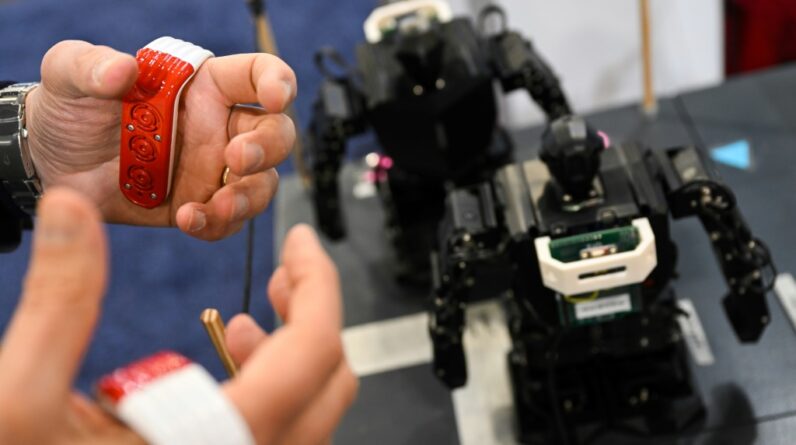
[ad_1]
Demonstration of Tactigon’s system to teach movements to a robot without having to program it. — © AFP
The first form of artificial intelligence that is capable of designing new robots that work in the real world has been developed. The robots are termed xenobots and this was made possible by an AI algorithm compressing long-term mechanical evolution into seconds.
The term xenobots is used because these are the first living robots made entirely from biological cells. This is the basis of a form of artificial life. Xenobots are primarily used as a scientific tool to understand how cells cooperate to build complex bodies during morphogenesis. These creations exhibit autonomous behaviours, such as self-repair and self-replication.
The Northwestern University robot has three legs and rear fins, and it was described as something a human engineer would never devise. Despite the peculiarity of its design and structure, such a robot is effective in a practical setting.
The process, led by Sam Kriegman, began with the idea for and subsequent development of the AI. To test the new AI, the researchers gave the system a simple prompt: Design a robot that can walk across a flat surface.
In the biological sense, it took nature billions of years to evolve the first walking species. With the new technological development, the algorithm compressed this form of evolution rapidly and designed a successfully walking robot in mere seconds.
The AI program runs on a lightweight personal computer and designs wholly novel structures from scratch.
With the creation of the novel robot, computers started with a block about the size of a bar of soap. From this, the AI quickly iterated on the design. With each iteration, the AI assessed its design, identified flaws and whittled away at the simulated block to update its structure. Eventually, the simulated robot could bounce in place, then hop forward and then shuffle. Finally, after just nine tries, it generated a robot that could walk half its body length per second — about half the speed of an average human stride.
The AI came up with the same solution for walking as nature: Legs, albeit with a different approach. The resulting robot has three legs, fins along its back, a flat face and is riddled with holes.
To assess walking, the researchers filled the rubber robot body with air, making its three legs expand. When the air deflated from the robot’s body, the legs contracted. By continually pumping air into the robot, it repeatedly expanded then contracted — causing slow but steady locomotion.
Going forwards, such robots may be able to navigate the rubble of a collapsed building, following thermal and vibrational signatures to search for trapped people and animals, or they might traverse sewer systems to diagnose problems, unclog pipes and repair damage.
The research appears in the journal Proceedings of the National Academy of Sciences. The research is titled “Efficient automatic design of robots.”
[ad_2]
Source link






